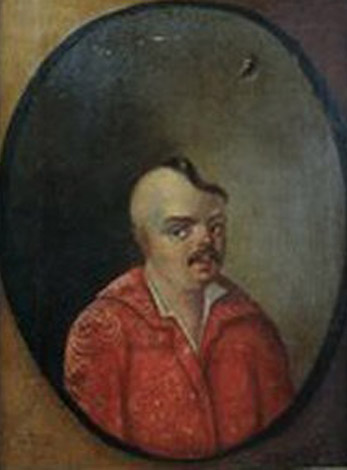Somko, Yakym
Somko, Yakym, b ? in Pereiaslav, d 28 September 1663 in Borzna. Cossack leader and acting hetman of Left-Bank Ukraine (1660–3); first father-in-law of Bohdan Khmelnytsky. He was a captain of Pereiaslav regiment in 1654, and in 1658 he became its acting colonel. At the Pereiaslav Council of 1660 that followed the conclusion of the Treaty of Slobodyshche (to which Somko was opposed) he was again elected colonel of Pereiaslav regiment and acting hetman of Left-Bank Ukraine. In 1660–2 he fought against both the Poles and the Tatars, who sought to occupy his territory. He initially supported Muscovy but gradually became disenchanted with its policies (particularly since they hindered his efforts at uniting all of the Cossack state under his command). His withdrawal of support caused Muscovy to distrust him. Bishop Maksym Fylymonovych, a stalwart Moscow loyalist and supporter of Ivan Briukhovetsky, was also ill disposed toward him. Somko, however, had the backing of the anti-Muscovite Kyivan clergy led by Innokentii Gizel and Ioanikii Galiatovsky.
Somko's opponents accused him of secret dealings with Yurii Khmelnytsky and Pavlo Teteria and with Poland and the Crimea. Moscow took advantage of the accusation—and of the fact that it had not yet approved the decision of the Cossack starshyna council at Kozelets in 1662 to recognize Somko's tenure as hetman—to instigate a chorna rada in Nizhyn (27–28 June 1663). The general gathering of Cossacks was convened to choose a new hetman. Vasyl Zolotarenko chose to support Somko, but a majority opted for Ivan Briukhovetsky, who was elected as hetman. As the event became increasingly hostile, Somko, Zolotarenko, and their supporters sought the protection of the Muscovite officials who were present as observers. But the officials imprisoned them and then handed them over to Briukhovetsky, who had them executed in Borzna. Somko is depicted by Panteleimon Kulish in his historical novel Chorna rada (The Black Council, 1857).
Arkadii Zhukovsky
[This article originally appeared in the Encyclopedia of Ukraine, vol. 4 (1993).]
